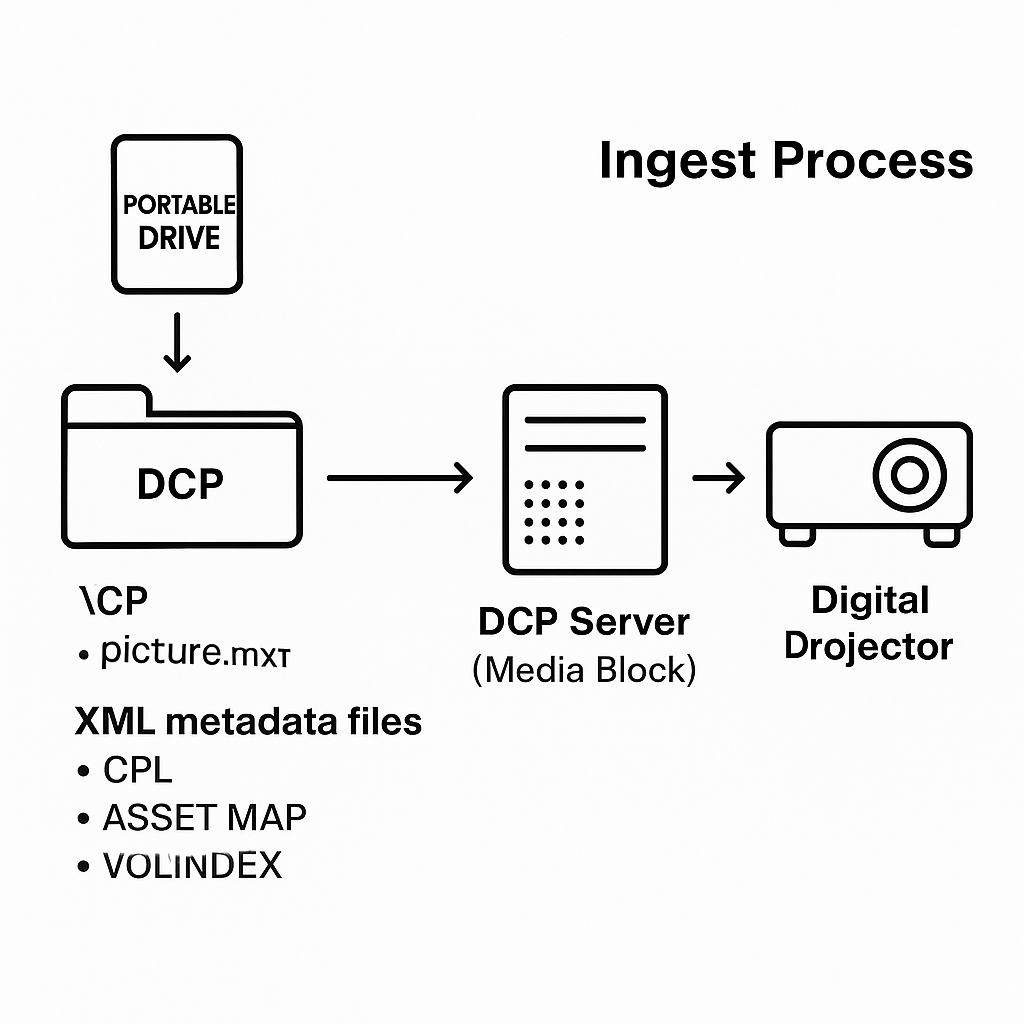What is a DCP?
A DCP — short for Digital Cinema Package — is the industry-standard format for distributing and projecting movies in modern theaters. Think of it as the “film reel” of the digital era, except instead of a physical strip of celluloid, it’s a carefully packaged set of digital files with strict formatting requirements. Read on to learn more about DCPs and the process OIF staff follows to ensure proper playback at a commercial theater.
1. What a DCP Is
- Purpose: To ensure your film plays correctly on professional cinema projectors anywhere in the world.
- Standard: Follows the Digital Cinema Initiatives (DCI) specification — a set of rules developed by the major studios to guarantee consistent image, sound, and security.
- Content:
- Video encoded in JPEG 2000 format (extremely high quality, high bit rate).
- Audio in uncompressed 24-bit PCM WAV (usually 48 kHz or 96 kHz).
- Optional subtitles or closed captions in XML format.
- Structure: Stored as a set of separate folders and files (for OIF, usually 6 or 7 separate files), not one big movie file.
2. The File Structure
A DCP is usually delivered on an EXT2/EXT3 formatted drive (Linux file system) with:
- MXF files – contain the actual image and audio tracks.
picture.mxf→ JPEG 2000 compressed video.sound.mxf→ multichannel audio.
- XML metadata files – describe how to play the content.
- CPL (Composition Playlist) – tells the projector the sequence of audio, video, subtitles.
- PKL (Packing List) – lists every file in the package with checksums.
- ASSETMAP & VOLINDEX – help the playback server locate and verify files.
- Subtitle XML – if your DCP includes subs.
3. Current OIF Export Structure
- Resolution:
- 2K: 1998×1080 (Flat 1.85:1)
- Frame Rates: 24 fps is the standard
- Aspect Ratio: Square Pixel (1.0)
- Bit Depth: 12-bit for video.
- Codec: Jpeg 2000
- Audio: Stereo (5.1 is preferred, but since we need the lowest common denominator for all films to play well, we export in Stereo).
- Time required to export: This depends greatly on the total running times and film formats provided. After assembly, it usually takes many hours, and sometimes days to export the DCPs in a ready state for an OIF screening.
4. Ingesting in a Theater
Theater projection systems have two main components:
- DCP Server (Media Block) — stores and decodes the files.
- Digital Projector — displays the image.
Ingest process:
- For OIF, we prepare all DCPs according to the above specs for the theater and deliver it on a portable drive, about a week prior to the screening (so we have a chance to fix anything that may not work properly).
- The projectionist connects the external drive.
- The server ingests (copies) the files into its internal storage.
- If the DCP is encrypted, a KDM (Key Delivery Message) is needed — this is a small file from the distributor that unlocks the DCP for playback on that exact server for a specific date range. OIF does not normally encrypt the DCPs.
- The server verifies file integrity and metadata.
- Once ingested and unlocked, the DCP appears in the playlist for scheduling and playback.
- The films and other video assets are checked by OIF staff and/or theater staff for issues in sound or video.
- Should there be any issues during the playback sessions, OIF will aks the filmmaker whose film has an issue for a fix and rebuild the DCPs with the corrected films. Time is of the essence at this junction.

